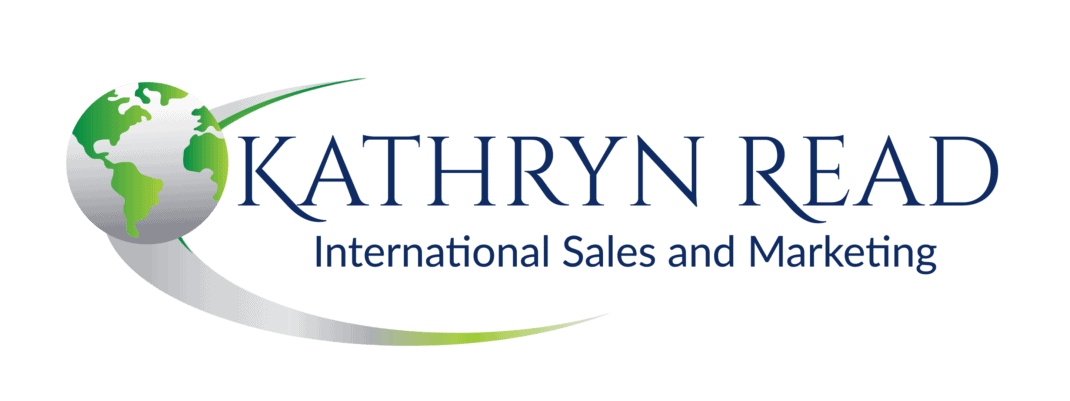Financial stress hurts employee performance, reducing productivity and motivation. Absenteeism increases. Focus reduces & mental health is affected. As such, the entire organisation suffers. Hence, the impact goes far beyond the individual.
While these pressures affect workers globally, responses may differ. Cultural backgrounds shape them. A team member in Japan may prioritise saving face over seeking debt advice. On the other hand, someone from Brazil may lean on a family member during a financial struggle.
Invisible divides challenge employers to create effective financial security programs across borders. Ignoring cultural factors risks alienating talent. Therefore, the management must design effective programmes to promote financial wellbeing in a multicultural workforce.
This is a sponsored post.
Table of Contents
Financial Wellbeing Across Borders: Definitions and Differences
There’s no single way to define financial wellbeing globally. It wears many different faces and in many cultures it is considered taboo to talk about money. Hence, it forces global companies to have varying approaches depending on where they operate or the needs of their workforce.
Our research before the pandemic showed that in England alone over 1.5 million people were experiencing both problem debt and mental health problems. The symptoms of mental health problems can make it harder to earn money, to manage spending and to get a fair deal on products and services. Life is likely to cost more, precisely when we have less money available to spend.
Mind
Individualism vs Collectivism: A Framework
Hofstede’s cultural dimension theory provides a construct for interpretation. People’s perceptions of themselves with others dictate their values. Here’s the key difference:
- Individualists: These societies value personal achievements. The self is viewed as autonomous of the group. Individual concerns carry more weight.
- Collectivists: Countries with this culture are interdependent on group members. The welfare of others within the group (such as family members) is more important.
To put things into perspective, let me talk about a practical example. Western cultures (the United States, the United Kingdom, Canada) tend to value individualism. Individuals are more self-sufficient. Autonomy is apparent even in how they handle their money. Personal freedom and self-achievement are important. Each person is responsible for his/her retirement and savings.
In contrast, Asian countries (China, India, Philippines) are more collectivist. As such, their social structures are shaped to support families and communities. For instance, it’s not uncommon for parents to provide for their children, even if the latter are already adults. Some may also expect their kids to take care of them financially when they retire.
High-Context vs Low-Context: Modelling Communication
The cultural context theory by Edward Hall is also worth mentioning. It’s a powerful lens for understanding the influence of culture in communication and how it can shape financial behaviours across employees.
- High-Context: Trusted community leaders and family networks deliver financial advice. In countries like Japan and China, employees may prefer informal support systems, such as when counselling for debt relief.
- Low-Context: Canada, Germany, and the United States are some nations where clear and direct communication is preferred. Credit counselling services, like financial help from wecanhelp.ca, will matter. Employees value expert opinions when implementing debt management plans.
Hence, awareness of cultural contexts helps the management design effective strategies for instilling financial resilience in its workforce.
Shared understanding, long-term relationships, and non-verbal cues are more important in high-context cultures. Unspoken expectations influence financial perspectives. In contrast, low-context cultures expect direct, explicit, and structured communications. There’s a higher expectation for clarity and open discussion.
Theory of Basic Human Values: Shaping Priorities
Ten basic personal values are identified by Shalom Schwartz. They provide a framework for understanding different universal values, which are prioritised differently across cultures. They can explain what financial well-being means for different people. Out of all the values outlined by Schwartz, one of the most important is the comparison of these two:
- Self-Enhancement: Individualistic cultures, such as the United States, Canada, and Australia, fit under this value. Achievement and power are highlighted. Personal progress is important, with employees valuing climbing the career ladder and wealth accumulation.
- Self-Transcendence: In countries like Costa Rica and Nepal, benevolence and universalism are vital. As such, they value social equity and care for others. Communal welfare is a pillar of strong policies within organisations to promote financial health among their employees.
Meanwhile, another value identified by Schwartz is important for financial well-being. Below, we compare how these values can affect individual risk tolerance and financial habits.
- Conservation Oriented: Security, conformity, and tradition are valued in Japan, Saudi Arabia, Turkey, and Poland, among other countries. Employees may prefer long-term savings, debt avoidance, and low-risk investments.
- Openness to Change: In Norway, the Netherlands, Canada, and Australia, independence, curiosity, and flexibility take the spotlight. They may be open to riskier investment portfolios and innovative solutions, such as cryptocurrency.
Strategies for Culturally Sensitive Financial Wellbeing Programmes
Crafting effective initiatives to promote financial well-being in a multicultural workforce requires more than translated pamphlets. Uniform policies won’t work.
1. Conduct Cultural Value Audits
Doing this helps clarify financial priorities embedded in the cultural DNA of employees. Applying the necessary frameworks, such as the cultural dimension theory, uncovers whether people prioritise autonomy, tradition, or communal welfare. These audits prevent policies rooted in assumptions. Instead, the management can identify what drives financial security in each context.
Initiatives risk relevance without cultural audits. A pension scheme promoting personal savings might disengage employees in regions where family support systems replace formal safety nets. Audits can bridge the gap.
2. Offer Hybrid Financial Tools
Combine tradition with innovation to address diverse risk tolerances and values. If people value communal trust, digital platforms for group savings may allow employees to pool funds virtually. On the other hand, individualistic markets may favour AI-driven investment apps offering personalised portfolio tips. This duality respects cultural differences.
Hybrid models acknowledge the fact that financial wellbeing isn’t a monolith. Rather, it’s a mosaic of global and local needs, guaranteeing that the needs and preferences of each employee are met.
3. Train Managers as Cross-Cultural Financial Mediators
Bridge cultural reality and organisational policy with the help of competent managers. Train them to recognise value clashes to prevent mistakes. In collectivist settings, framing debt counselling as a component of family wellness reduces stigma. At the same time, individualistic teams may respond to autonomy-focused messages, such as those encouraging them to take full control of their future.
Effective mediators spot unspoken needs. This is especially important in countries where employees are not upfront when it comes to what they want. Many may be reluctant to discuss debt openly, and that’s one thing skilled managers can identify.
4. Leverage Technology for Cultural Customisation
AI-powered platforms adjust tone, imagery, and delivery to suit specific cultural contexts. High-context countries like Japan may benefit from nature metaphors and indirect suggestions. The United States and countries with similar cultures may prefer bold headlines and explicit calls to action. Machine learning can also adapt advice based on regional financial norms, such as avoiding interest-centric topics in areas where employees are mostly Muslim.
Using the right tech goes beyond translation. It’s a transformation. Embedding cultural intelligence into financial platforms for employees shows that the management understands their varying needs.
5. Ensure Inclusive Language and Accessibility
Transform abstract concepts into actionable insights by creating culturally familiar campaigns. Budgeting tools are framed as emergency funds for family safety nets for collectivists. Doing so reflects shared responsibility. On the other hand, individualistic societies might respond better to personal freedom plans offering flexibility. It can convey a message of autonomy.
Visual clarity also matters. Use plain language, infographics, and audio to make the material more inclusive. Some may prefer learning through video or mobile formats. This is especially true in places where computer access is limited.
Language translation is also vital. While many global organisations will use English, consider that some may be more comfortable in their local languages. Understanding financial terminology can be a struggle for some. Write or speak in such a way that the employees will be more comfortable.
Employers have the power to improve both the financial and mental wellbeing of their workforce, as well as their productivity, by introducing new processes or resources that build financial resilience, creating a culture of support and providing essential help once problems have set in.
Mind
Company-Specific Examples of Promoting Financial Well-Being in a Multicultural Workforce
Are you clueless about how to implement effective programs to promote financial inclusion and health in a diverse setting? Below, let’s look at some examples of how specific organisations are tackling the challenge.
Pepsi Co.
The company recognises the significant impact of financial stress on the physical and emotional wellness of its employees. The management is addressing such through Healthy Money, an initiative to help the organisation’s almost 300,000 employees globally. Budgeting and debt management become easier, as well as retirement preparation.
Their business operations span across 59 countries. As such, it’s essential to address the cultural variances. Personalised and impartial financial education is offered. Financial support is localised. More than three-quarters of the programme’s users came back for more, signalling engagement. Gift cards, prize draws, and other incentives were also given out to increase involvement.
Foot Locker
With approximately 3,500 stores in more than 25 countries, Foot Locker is a leading name in the retail industry. It has a global presence in North America, Europe, and Asia. The company introduced the Enrich financial wellness programme in coordination with iGrad, a financial education firm from San Francisco. While it is a global product, it is localised to ensure cultural differences are considered.
One of its best features is Your Money Personality. It’s a tool analysing financial behaviour through a mobile-friendly and interactive platform. Meanwhile, country-specific resources provide holistic information like local banking tips and tax guides.
Tata Capital
An Indian company in the financial services sector, Tata Capital launched Elevate in 2022. It aims to promote financial well-being in its multi-generational and culturally diverse workforce. An employee can take an online quiz and will be given tailored recommendations based on the results. There’s also a knowledge base containing research reports, blogs, and webinars. More so, you can find calculators for retirement plans, investments, and financial goals.
The inclusive reach of the programme is among its biggest benefits. Beyond office staff, security and administrative workers can also access the financial wellness platform. It addresses the socio-economic diversity of its global workforce.
Promoting Financial Wellness: What Your Programme Must Include
Now, let’s take a look at some examples of specific programmes organisations can implement to champion financial wellness in their global operations.
Student Loan Repayment Assistance
Paying for one’s education can be a global struggle. Companies can provide financial assistance so their employees can repay their debts quickly. But education programmes and costs vary internationally. So, these differences must be taken into account. Knowing the local realities helps in designing more effective interventions.
Housing Loan and Rent Assistance
For collectivist nations, support can include monetary assistance for shared housing options. Meanwhile, individualist countries may prefer property investment advice to help them kickstart their real estate journey. The housing benefits must be culturally sensitive to show an understanding of what housing security means across locations.
Family and Dependent Support
Financial health is inseparable from family well-being in many cultures. This means companies must design solutions aimed at caring for children or ageing parents. Childcare subsidies, eldercare allowances, and dependent education funds may be made available for those in regions like Asia and North America. These benefits can ease pressure while also demonstrating sensitivity. In Europe, some larger companies organise kindergarden facilities onsite to support parents of young children.
Retirement Planning
Different people have different views of what an ideal retirement might look like. For some, it could mean financial freedom for themselves. For others, it could be having the funds to support their children. Companies with operations in Muslim nations may design Sharia-compliant pensions or investments in Halal ventures. For those in countries where sustainability is embedded in culture, such as Sweden, ESG-aligned pensions may be relevant.
Debt Counseling
As earlier mentioned, debt counselling may differ based on whether the employees are in a high or low-context culture. The wording has a huge influence on the programme’s effectiveness. It’s also important to highlight whether the benefits are targeted towards the individual or if they can also be extended to the family. Use the power of storytelling to craft a more engaging narrative. Plus, they should be administered in a local language to promote better understanding.
Wrapping Up
Global – that’s one word that can describe today’s workforce. Many companies have an international presence. Hence, they have employees around the world. Therefore, crafting policies to promote financial wellbeing in a multicultural workforce requires a look at their values and beliefs. Even within a single production site, many nationalities can be represented, so even within a country you may need to offer flexible solutions depending on the situation and cultural context of individuals.
Implementing culturally sensitive financial support goes beyond reducing stress and improving productivity. It builds credibility and trust, which in turn strengthens company loyalty. Doing such shows employees they’re important, regardless of where they are as well as helping with retention rates, which in turn is also good for the business.
Thinking that working with a consultant would accelerate your international expansion?
If you’d like to learn more about working with me for support on your internationalisation projects or personal export knowledge, you can book a 30 minute international clarity call here.
If you haven’t already signed up for my free e-book about how to select which international market to enter next, you can do so here, or using the form below.
If you enjoyed this content please share it on social media or recommend it to your network.
Pin this post for later!








100% – it’s a win-win for both company and employees
Hi there, wow! it was great article thank you so much for sharing it. From this article I get a abundance of knowledge.